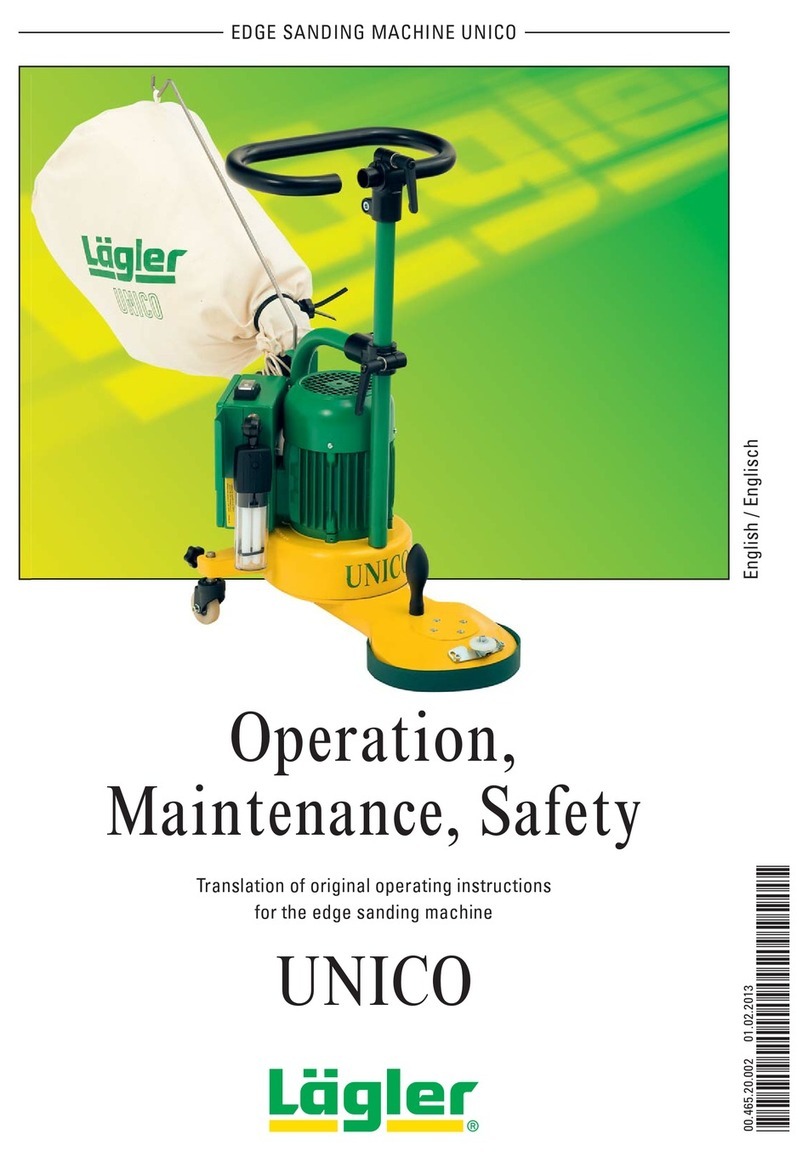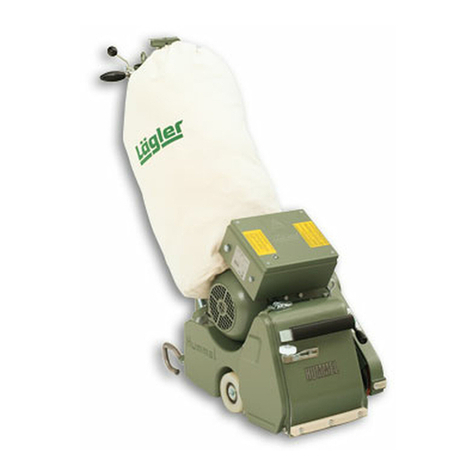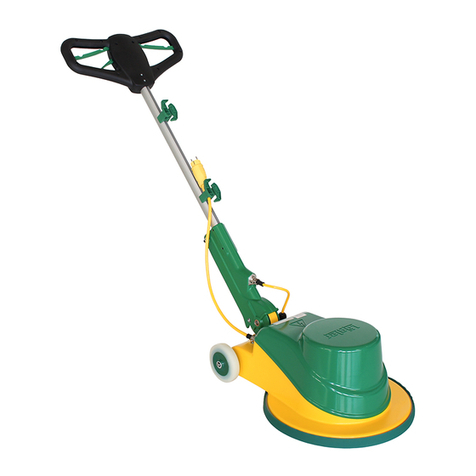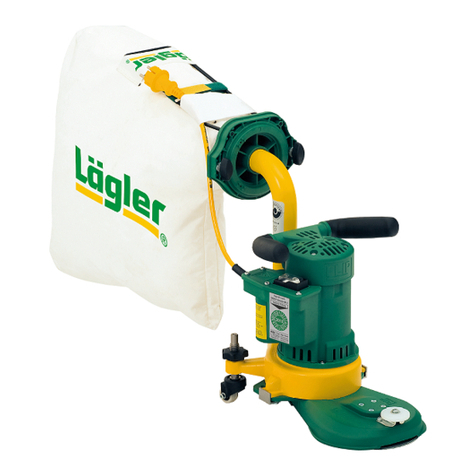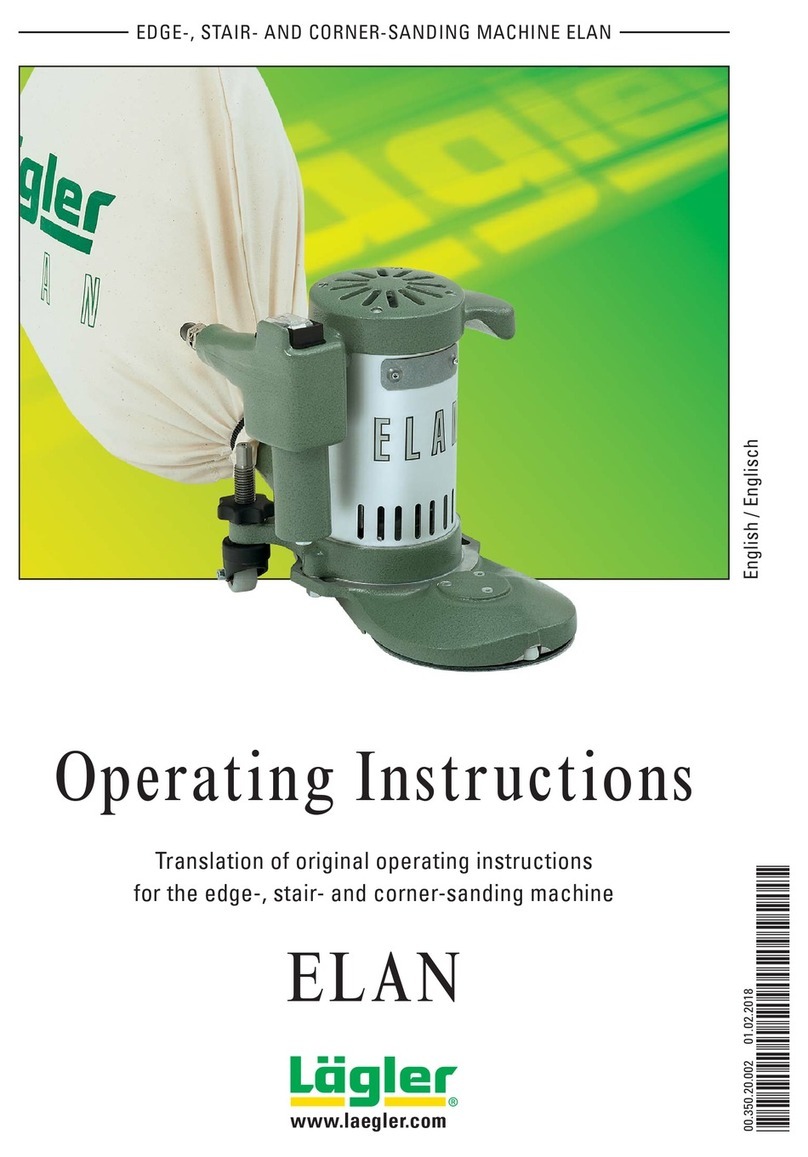
SINGLE 01.02.2013
English / Englisch
TECHNICAL DATA
Technical data
1.5 SAFETY DEVICES
The following parts of the machine are safety devices and must
accordingly be kept in perfect working order:
Machine housing = Protection from sanding plate
and sanding disc
Dust extraction socket with cap = Protection from sanding plate
and sanding disc
Motor cover = Protection from live parts
Handles on the guide tube = Protection from live parts
Manufacturer....................................................... Eugen Lägler GmbH
Machine type....................................... Single-disc sanding machine
Serial number ............................................................. see rating plate
Year of construction................................................... see rating plate
Motor type.......................................................single-phase AC motor
Voltage .......................................................................................... 230 V
Frequency ...........................................................................50 Hz (CPS)
Output..........................................................................................1.2 kW
Fusing ..............................................................................................16 A
Insulation class ...................................................................................B
Protection rating ...........................................................................IP 54
Safety devices.......................................................no-voltage release
thermal switch as overload
protection in the motor
Starting capacitor ........................................................................ 60 µF
Operating capacitor..................................................................... 40 µF
Sanding plate diameter .................................................. 406 mm (16“)
Sanding plate speed .....................................approx. 180 1/min (rpm)
Total height without guide tube ................................. 265 mm (10 ½“)
Total length without guide tube ................................. 615 mm (24 ¼“)
Height above sanding plate ........................................... 46 mm (1 ¾“)
Total width.................................................................. 435 mm (17 1/8“)
Weight of the machine with sanding plate..................45 kg (99 lbs.)
Workplace-related noise emission values
(Measuring point at the operator’s ear; 1.5 m above floor level)
parquet sanding operation, sanding oak parquet
Sanding paper grain size 60................................................77 dB(A)
Vibration total value ahv .......................................................< 2.5 m/s²
(measured at the handle)
Note on noise emission:
The specified values are emission values
and are not required to constitute safe
workplace levels. Although a correlation
does exist between emission and imission
levels, it is not possible to conclude on this
basis whether additional precautionary
measures are necessary. Factors which
influence the current imission level existing
at the workplace include the duration of
exposure, the character of the workroom,
other noise sources such as the number of
machines, and other adjacent machining
processes. The admissible workplace
values can also vary from one country
to another. However, this information is
provided in order to enable the user to better
estimate the level of danger and risk.
2
2
6





